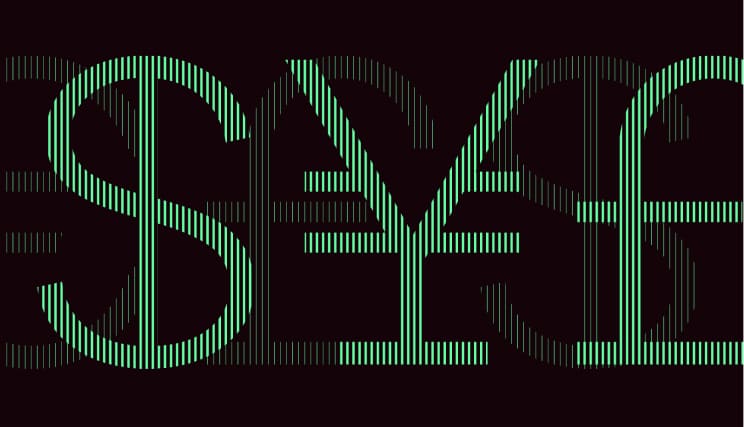Gain an overview of the latest developments on the currency market and anticipate fluctuation risks.
Loss of bearings
At the start of the year, the market consensus was that the US was headed for a recession. But all for nought, as the US economy is in good health and doing even better than expected. The second estimate of US GDP was 1.3% versus 1.1%. However, one country is in recession: Germany. Its economy contracted by 0.5% in Q4 2022 and by 0.3% in Q1 2023. The country is plagued by all the ills facing developed countries, including structurally high inflation, sluggish consumer spending and a contracting manufacturing sector. This change of economic paradigm has had repercussions in the foreign-exchange markets as dealers have switched back into the US dollar and many vulnerable currencies, particularly the euro, have depreciated. It remains to be seen if these trends are lasting or temporary.
EUR/USD
High: 1.1130 Low: 1.0743 Variation: -2.16%
From a seasonal perspective, May is generally a positive month for the US dollar. This was proven once again. The euro began a long slide that reflects both uncertainty about the monetary policy outlook in the short term, a purely technical adjustment (extreme buy positions on the euro, leading to an unwinding of positions) and economic conditions that re weakening more rapidly in the eurozone than in the US. If the EUR/USD pair dips below the support range of 1.07, it can be expected to extend its decline. As long as the pair stays above 1.0450, the long-term trend remains upwards.
EUR/GBP
High: 0.8863 Low: 0.8668 Variation: -1.81%
What is so wonderful about sterling is that, whatever happens on the macroeconomic front, the UK currency is resilient. Weak statistics are piling up in the UK. Core inflation, the true barometer of inflationary strains, has risen from 6.2% to 6.8% year-on-year. This will make life harder for the Bank of England. And food inflation is showing no tangible signs of slowing (19.1%!). All this adds up to a massive impoverishment of the UK population. Despite this, sterling is in good health. This is the perfect example of a currency completely disconnected from the fundamentals of its economy.
GBP/USD
High: 1.2653 Low: 1.2357 Variation: -0.62%
The pair’s depreciation is probably due in large part to seasonality (May is historically a fairly positive month for the US dollar after a weak performance in April). But seasonality is a secondary factor in June. In contrast, monetary policy is likely to make a big comeback amid rampant speculation of fresh rate hikes in the UK and, less plausibly in our view, the US. Note that the support level of around 1.2350 has not changed much over the past two months. This is consequently an important level to take into consideration.
EUR/CNH
High: 7.6619 Low: 7.5610 Variation: -0.21%
The pair recorded a negative monthly variation. But this is misleading. Over recent weeks, the CNH has shown considerable signs of weakness, reflecting a series of poor Chinese economic statistics. Bucking expectations, the Chinese recovery is set to be very sluggish and mainly driven by exports. Demand is still flagging. Stimulus measures by the People’s Bank of China can now be expected.
EUR/CHF
High: 0.9912 Low: 0.9745 Variation: -1.24%
The EUR/CHF is among the currency pairs whose direction is little in doubt. As long as the EUR/CHF is below parity, the pair will probably continue falling. The cross is underway on a downward trend under a falling angle. In March, the euro broke below the support level of 0.97. Even though the pair is now hovering around this level, this is an important technical signal. It is also worth adding that the EUR/CHF is ranging below its moving averages (another bearish signal). We have a long-term price target of 0.9410 today.
EUR/CAD
High: 1.5073 Low: 1.4523 Variation: -2.49%
The decline in the EUR/CAD reflects two phenomena: 1) a repositioning by currency traders after long having buy positions in the EUR, and 2) the possibility that the Bank of Canada, which has paused its monetary policy, will decide to raise its policy rate again amid mounting inflationary pressures. On a monthly basis, the euro’s decline is remarkable and a rebalancing can subsequently be expected. We do not rule out a rally by the euro in the short term. The single currency may be aided by low oil prices, as these are normally detrimental to the Canadian dollar.
EUR/AUD
High: 1.6786 Low: 1.6136 Variation: -0.64%
Last May, the Reserve Bank of Australia (RBA) took the market by surprise when it raised its policy rate by 25 basis points (whereas the consensus was forecasting a pause). Other rate hikes are set to follow to tackle inflation, probably as early as June (the bank’s next meeting is scheduled on 6 June). Expectations of rate interest-rate increase are obviously boosting the Australian dollar, even if this is less the case today than a few months ago. Fresh surprises by the RBA are not impossible and vigilance is therefore necessary on this pair.
EUR/JPY
High: 378.75 Low: 369.86 Variation: -0.73%
Fortunately for euro, the Japanese yen was there to allow it to post a solid performance in May. The pair’s trend is still upwards. Many traders believe that very high inflation in Japan will force the central bank into action (this could theoretically boost the Japanese yen). But the central bank’s capacity for inaction should not be underestimated. At the start of the year, the market was rife with speculation about an exit from the ultra-accommodative monetary policy. In our view, the status quo has the upper hand at present. This is conducive to a continued appreciation of the EUR/JPY pair.
EUR/HUF
High: 378.75 Low: 369.86 Variation: -0.73%
Fortunately for euro, the Japanese yen was there to allow it to post a solid performance in May. The pair’s trend is still upwards. Many traders believe that very high inflation in Japan will force the central bank into action (this could theoretically boost the Japanese yen). But the central bank’s capacity for inaction should not be underestimated. At the start of the year, the market was rife with speculation about an exit from the ultra-accommodative monetary policy. In our view, the status quo has the upper hand at present. This is conducive to a continued appreciation of the EUR/JPY pair.
USD/HUF
High: 351.72 Low: 335.82 Variation: +0.95%
One factor that is often overlooked in the currency markets is seasonality. In May, the US dollar usually rallies after a somewhat mediocre performance in April. This is precisely what has happened. Concerns about the macroeconomic outlook and the raising of the debt ceiling in the US have also undoubtedly played a part. In June, seasonality is usually weaker. However, we think this will be another fairly positive month for the US dollar.
Economic calendar
| DATE | CURRENCY | EVENT |
| 01/06 | EUR | Eurozone inflation in May |
| 02/06 | USD | Labour Department's jobs report for May |
| 06/06 | AUD | Central bank meeting |
| 14/06 | USD | Central bank meeting |
| 15/06 | EUR | Central bank meeting |
| 20/06 | HUF | Central bank meeting |
Topics




